On our field trip to the high school last week, we saw this secondary entrance where two different creative solutions had been incorporated. For the interior bank of doors, wall stops on posts (I would have used overhead stops or spring-cush closers – WWYD?):
On the exterior bank of doors, the original pull handles had been changed to wire pulls – apparently because of the threat of a pick-up truck hitching a chain to the pulls and yanking the doors off. The wire pull just breaks off and it’s an inexpensive repair. I had not heard of this security method before – how about you?
You need to login or register to bookmark/favorite this content.

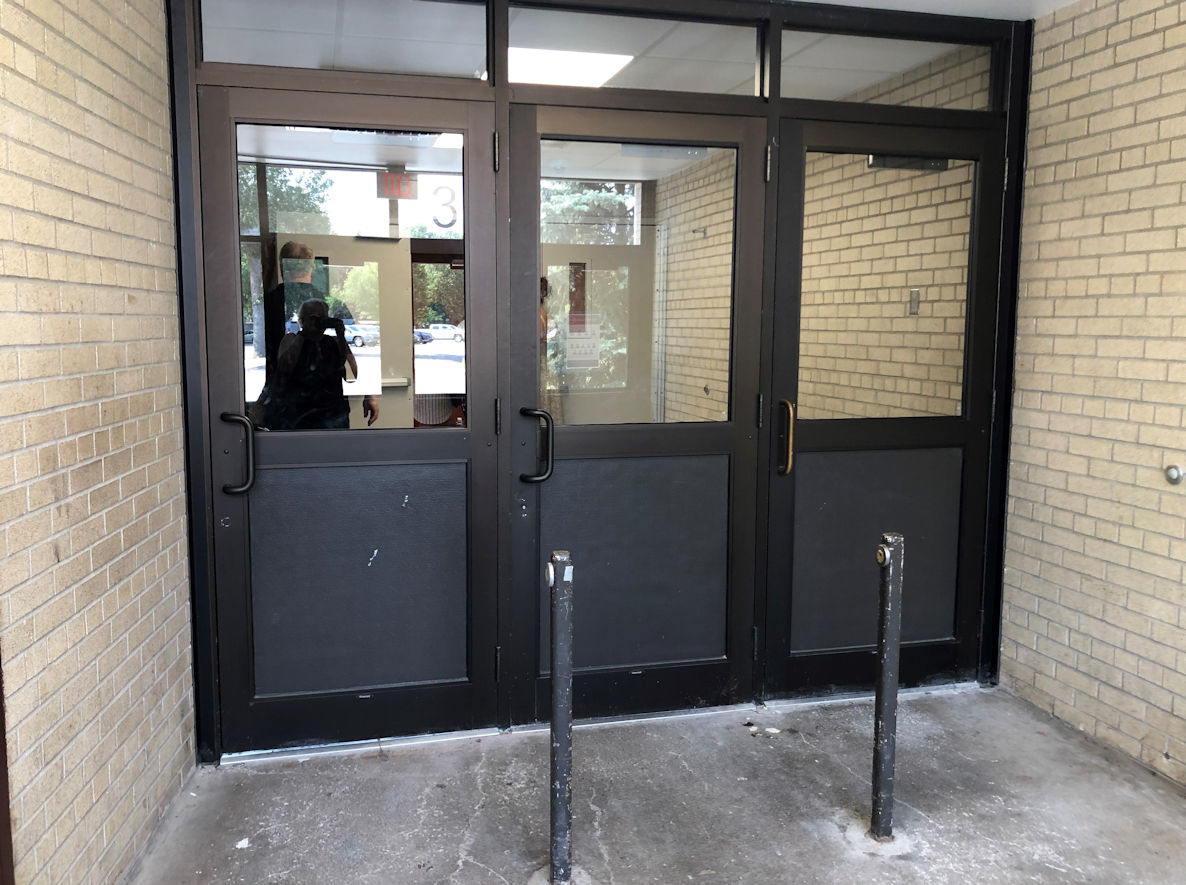

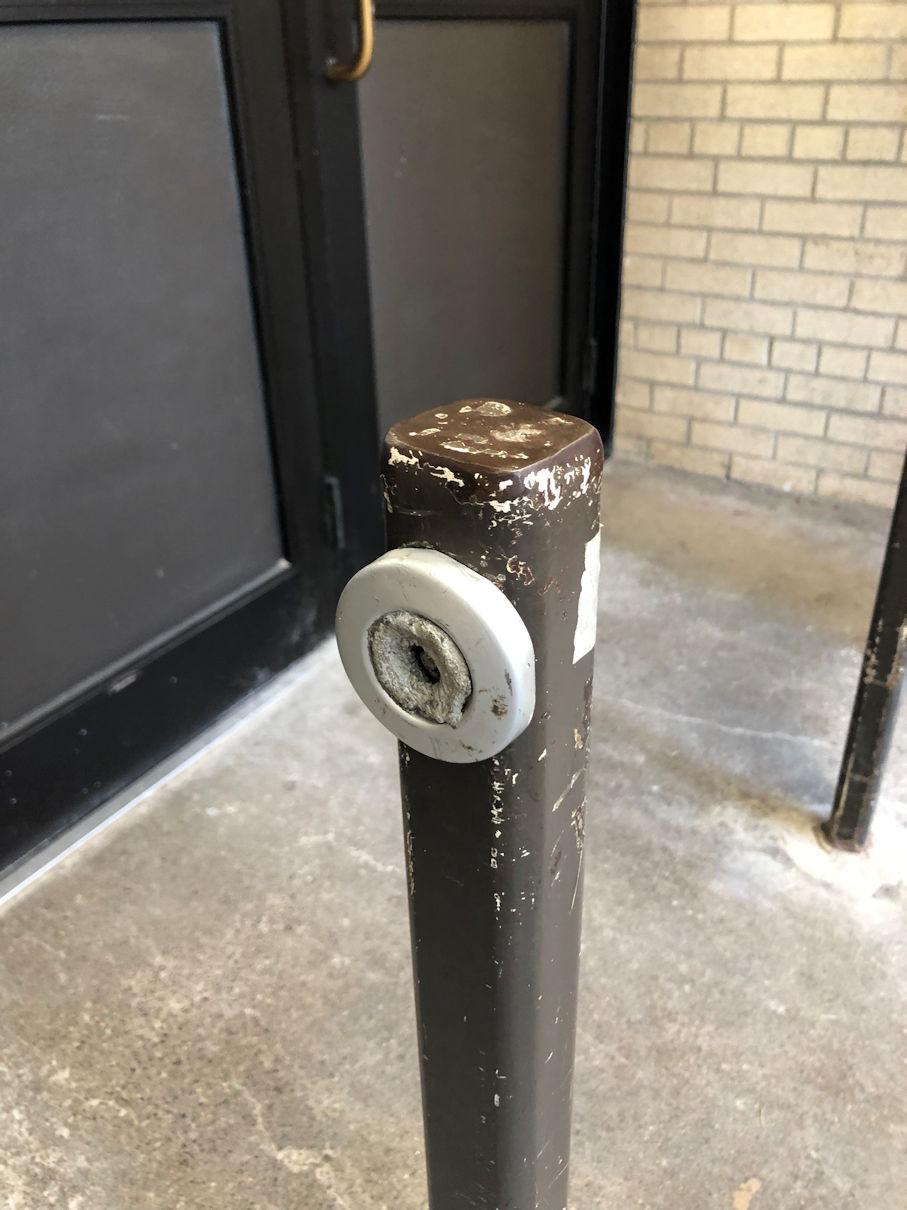
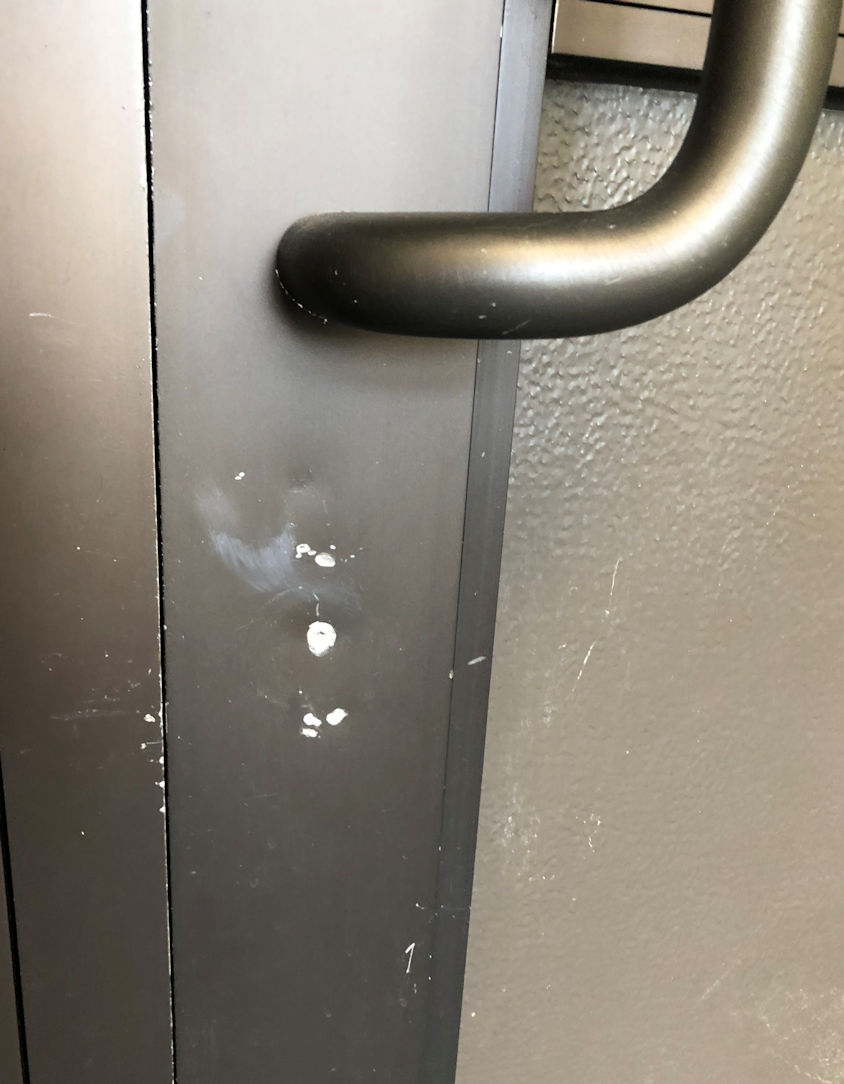

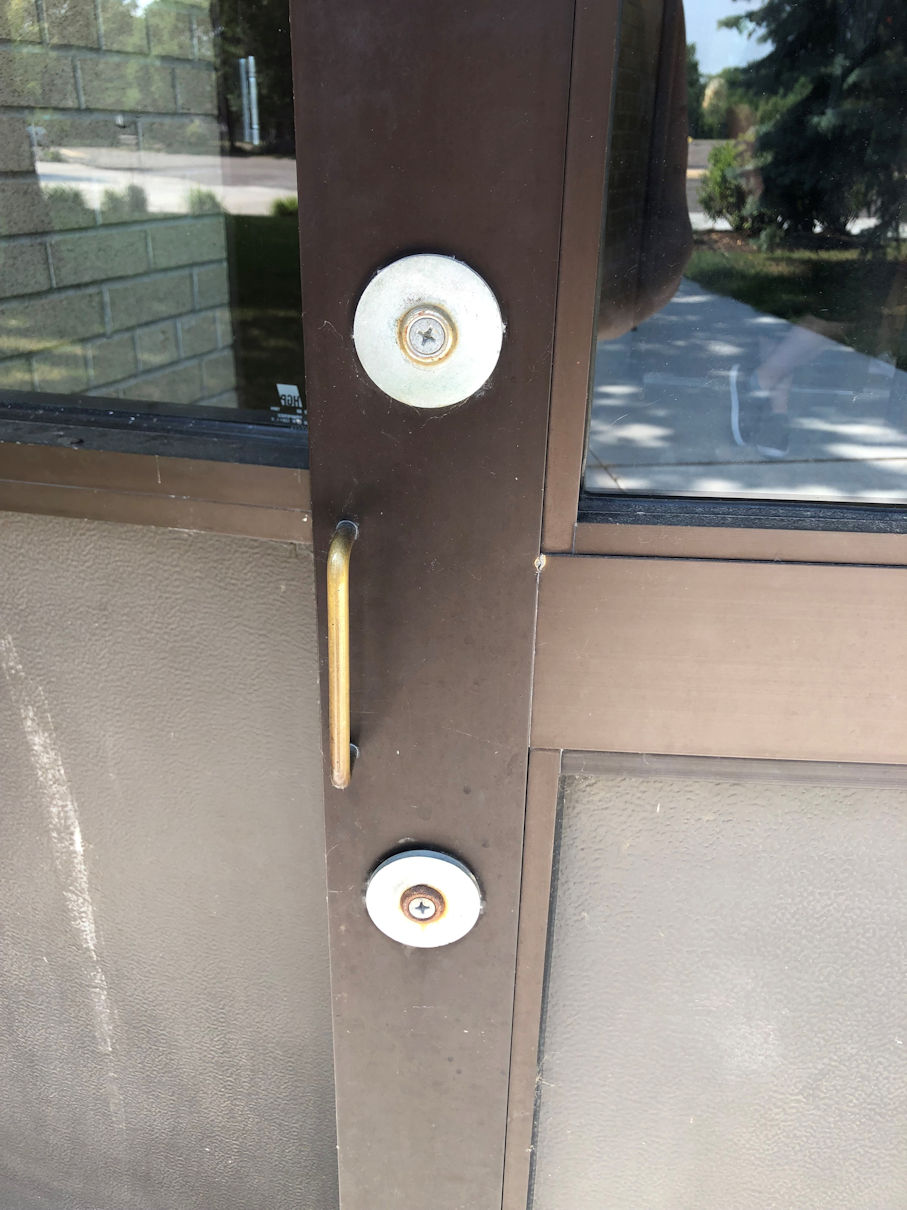
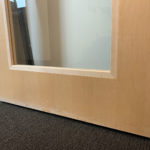

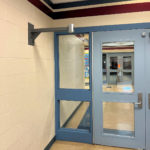
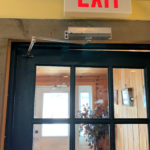




Looks like both of those “fixes” may affect accessibility requirements.
Agree – i don’t see how any of these 3 doors has the required maneuvering clearances for the pull side of a door (ADA section/figure 404.2.4.1 (a)).
Apparently, aesthetics were not a consideration in their decision making process!
At first glance I thought those stops were push plates to activate the doors. I’ve never seen anyone do this. Maybe put in bollards to use as door and truck stops
I heard about a gun store where the truck rammed the doors after tearing off the pulls in its attempt to break in. I guess it depends on how badly they want to get in.
I once was told (and still hold to this day) that “locks are to keep honest people out”. Your example is perfect for this phrase.
For the top fix, there is an architect firm that regularly uses a similar (though more durable) post-type stop because one of the partners hates overhead stops and cush stops–feels they aren’t durable. Hence, this solution. As for the bottom solution, with the wire pulls… I understand the argument, but I feel pity for maintenance.
The bollard type stop while effective may impair egress in emergency situations.
However on the so called “Wire” pull option i have often used a inexpensive surface mounted pull handle for areas where they may be cause for concern of breakins .
I would think the posts create issues with Maneuvering Clearances. Wire Pulls are interesting, seem to meet ADA 4.13.9 Ugly as sin though.
How are “wire pulls” accessible?
Are the smaller, wire pulls engineered for use with a much heavier, aluminum door?
Closers with a spring stop in the arm, or separate overhead stops (preferred).
If vandalism and forced entry are the concern with those pulls, then I would use vandal-resistant pulls. There is nothing to tie up to, and they are not easily broken off or damaged.
bollard-mounted stops: nope. Need to lose the standard-weight hinges & use pivots or continuous hinges, and then use an overhead stop (don’t like backstop door closer arms at high-traffic openings). Advanced variable backcheck would be a good option for the closer. Also, the bollards incur into the req’d pull-side front approach accessible zone.
itty-bitty wire pull: c’mon, man! How about engineering a point of failure for the full-size pull, where the through bolts are designed to break with greater than, say, 150lbs of force; bolts break well before latch/strike engagement point fails. Would be helpful if hardware manufacturers offered this option.
I agree with Todd and Jeff, and think it’s only a matter of “when” and not “if” someone gets hurt around those door stop bollards.
The way I see it, the bollards are an afterthought of poor door assembly design. They are not the first problem. Two of the doors should have been a double with KRM mullion and both the outer doors would swing against the wall. As others have suggested, backcheck makes a huge durability difference so you could make the center door an overhead stop if it is designed right. The dent in the door is all about backcheck.
If bollards are needed, the bigger, the better in my view. Small bollards are difficult to see in a crowd, but large ones become more easily avoidable. I like 4″x6″x 48″ tall. It is more likely to be seen or sensed in a crowd (like a large child) and the flow of traffic will move around it. D-style dock bumpers last WAY longer that standard wall stop bumpers.
Like this or similar: https://www.amazon.com/Buyers-Products-Extruded-Rubber-D-Bumper/dp/B07F4L4C32/ref=psdc_15709271_t1_B01FZ55Q8K
Thanks David! You always have great insight to share!
– Lori
Odd on the anti truck pull method. I have dealt with things like this and I go the other way. Offset pull and frangible bolts. Any inline wire pull would not give you an advantage against pulling force its the offset that creates the added stress to snap the frangible bolts.